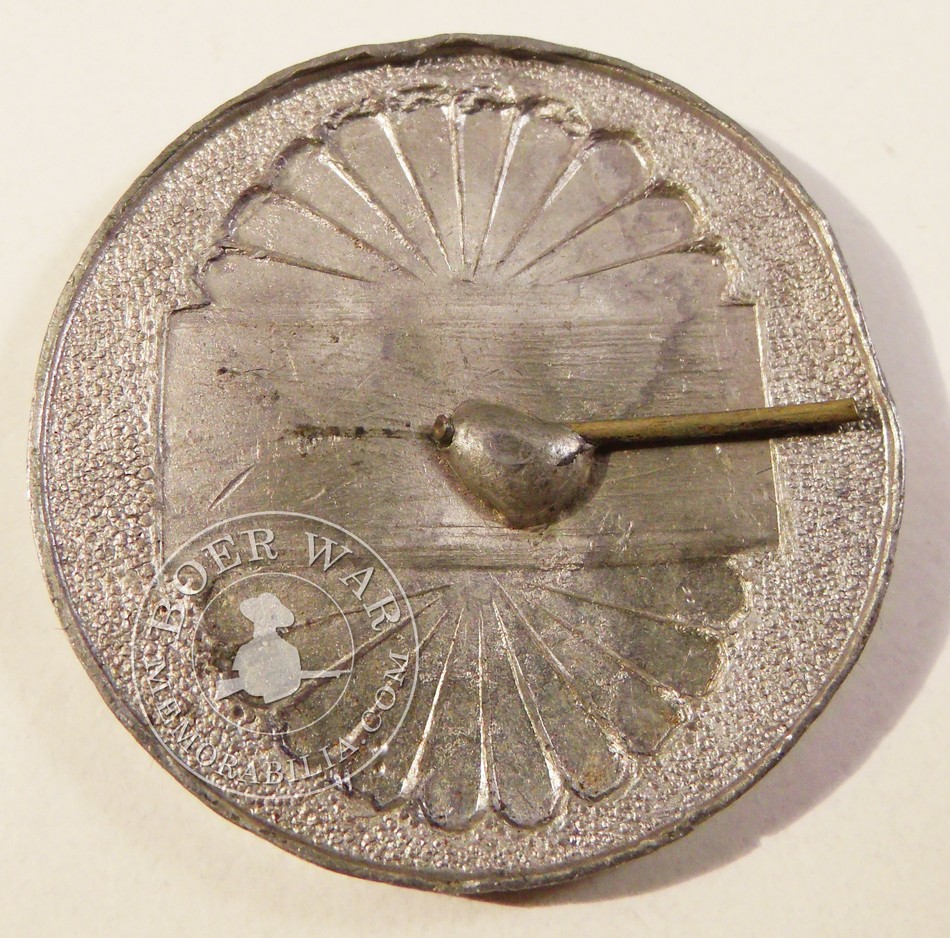|
View the embedded image gallery online at:
https://boerwarmemorabilia.com/index.php/memorabilia/medallions/item/166-boer-war-medallion#sigProIdf9d0e097d9 |
Item Ref# MS7442
Transvaal War Sourvenir - Boer War
Edge: Plain. Obverse: British soldier standing on ground, front, rifle at the ready, bandaged head. Crossed flag poles below bearing the British Union flag (left) and Royal standard (right). Below: “1899 / 1900”. Legend above: “TRANSVAAL WAR SOUVENIR”. |

British Sheer Bombardment of Soldiers at the Boers
When Kitchener became commander-in-chief in South Africa, he had at his disposal approximately 210 000 white soldiers plus several thousand black and coloured persons (who were primarily employed in a non-combatant capacity). Nearly 50% of the soldiers were performing garrison duty. At that stage, the number of Boers in the field did not exceed approximately 35 000.
Kitchener needed more troops to pursue the mobile Boers in the field, and consequently asked for reinforcements. By May 1901, he had 240 000 troops – the largest number at any stage of the conflict. These troops included an increasing number of irregular forces, either formed from the local colonies (Natal and Cape Colony), or consisting of volunteers from colonies such as Australia, New Zealand, Canada and India. In due course, controversial units such as the Bushveldt Carbineers under Breaker Morant and others also joined the British advance.
In the course of the war, 448 735 white soldiers served on the side of the British, whereas no more than 78 000 served on the side of the Boers, and never more than 47 000 at any given time. But Kitchener also increased the number of black and coloured troops in British service to a total of as many as 140 000. In due course, at least 25 000 of these troops served as armed blockhouse guards, while several thousand also served in mobile columns that hunted Boer commandos.
Source: Boer Guerrilla and British Counterguerrilla Operations
| Scripture |
|
“And this know, that if the goodman of the house had known what hour the thief would come, he would have watched, and not have suffered his house to be broken through.” Luke 12:39 |

